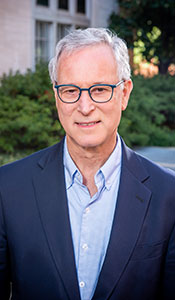NF Forum
In early May, I travelled to Atlanta to participate in the NF Forum, a bi-annual event sponsored by the Children’s Tumor Foundation (CTF). Held in different cities across the U.S. each year, the NF Forum is a national patient education and family gathering that features NF experts from around the country providing a series of keynote presentations, panels, and sessions on a variety of NF topics such as research advances and current clinical issues. The event included a meeting for clinic coordinators, physicians, genetic counselors, and other healthcare professionals, as well as a series of talks aimed at the NF patient community. I presented a talk on advances in NF treatment and provided an update on our research program’s current cutaneous neurofibroma clinical trial using an investigational drug. The NF Forum is important for disseminating the most current information about NF and also provides NF patients and their families an opportunity to network and learn from one another.
Clinical Care Guidelines for Adults with NF1
The American College of Medical Genetics and Genomics (ACMG) has recently spearheaded an effort to produce suggestions for clinical practice for adults with NF1. As part of this effort, the ACMG convened a panel of clinical experts to review current practice and published papers, and to use these to formulate guidelines for care of adults with NF1. Concluding many months of work, these guidelines were recently published in the journal Genetics in Medicineand are officially sponsored by the American College of Medical Genetics and Genomics (https://www.nature.com/articles/gim201828). These consensus guidelines were written for the professional community, specifically general practitioners and other healthcare professionals providing care to adult patients with NF1. Pediatric guidelines for NF1 produced by the American Academy of Pediatrics (AAP) have been available for many years. The American College of Medical Genetics and Genomics and the AAP have recently partnered in an effort to write updated pediatric guidelines, which are still in process.
There are two major types of guidelines: evidence-based and consensus guidelines. Evidence-based guidelines are considered more authoritative and are developed through a formal process that involves gathering published, peer-reviewed results of clinical research and reviewing evidence about why a certain approach or treatment is or is not effective. Evidence-based guidelines carry a great deal of weight, especially with insurance carriers. However, for NF1, our panel didn’t feel that evidence-based guidelines were an option at this point in time. The primary reason is that there have been very few large, randomized clinical trials for management of NF1 due to the relatively small numbers of individuals with the condition and the significant variability in symptoms and complications. It is easier to conduct large clinical trials for common conditions such as diabetes and cardiovascular disease. Another obstacle is that a thorough review of evidence is a time-consuming and expensive process, beyond the reach of the organizations sponsoring the guideline development at this time.
Consensus guidelines, like those written for NF1, are developed by convening a group of clinical experts who provide their opinions based on clinical experience as well as a review of evidence from the literature. These guidelines summarize current knowledge of clinical care and propose an approach to diagnosis and management. Because the consensus guidelines for NF1 are intended for general practitioners, they provide guidance in identifying specific problems but don’t address treatment, which would be managed by a specialist. For example, the guidelines address the identification of patients showing signs of a malignant tumor, but they don’t specify how to treat the malignant tumor.
Guidelines for Malignant Peripheral Nerve Sheath Tumors
In the next few months, I’ll try to discuss some of the recommendations of the adult guideline panel, and, when it is available, the pediatric guidelines. To start, I’ll cover one of the issues addressed in the clinical care guidelines, the occurrence of malignant peripheral nerve sheath tumors (MPNST). These malignancies occur in about 10% of people with NF1 and represent one of the few life-threatening complications of the condition. MPNSTs occur mostly in teens and young adults with NF1. Malignant peripheral nerve sheath tumors usually arise from pre-existing plexiform or nodular neurofibromas. Atypical neurofibromas, which have distinctive clinical and pathological features, may be a precursor to the development of an MPNST and appear as homogenous nodules that, if superficial, have a firm consistency when palpated.
Because MPNSTs are very difficult to treat, the focus is on early diagnosis. The clinical care guidelines for NF1 indicate a possible diagnosis based on any one of the following: persistent unexplained pain; rapid growth of a tumor; a change in a tumor from soft to hard; and the use of PET scanning to determine increased uptake of the radioactive tracer. The use of whole body MRI may be of value as a screening tool in helping to identify atypical neurofibromas so they can be followed or surgically removed to prevent their progression to MPNSTs. However, the utility of this approach requires further study at this time.
